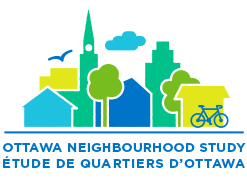In Your Neighbourhood, Who Draws the Map?
July 8, 2016
Three times already this year, local news stations have incorrectly identified a particular Dallas neighbourhood, Pleasant Grove, as the scene of violent crimes that actually occurred in other neighbourhoods [writes Lizzie MacWillie, a Dallas Public Voices participant and a senior design manager at buildingcommunityWORKSHOP, a nonprofit community design centre]. This is one of several reasons I’ve spent the last year asking Dallas residents to draw maps of their neighbourhoods. The effort, launched two years ago by the nonprofit where I work, mirrors similar initiatives across the country, in cities including New York, Chicago and Portland. By crowd-sourcing neighbourhood boundaries, residents can put themselves on the map in critical ways.
Why does this matter? Neighbourhoods are the smallest organising element in any city. A strong city is made up of strong neighbourhoods, where the residents can effectively advocate for their needs. A neighbourhood boundary marks off a particular geography and calls out important elements within that geography: architecture, street fabric, public spaces and natural resources, to name a few. Putting that line on a page lets residents begin to identify needs and set priorities. Without boundaries, there’s no way to know where to start.
Knowing a neighbourhood’s boundaries and unique features allows a group to list its assets. What buildings have historic significance? What shops and restaurants exist? It also helps highlight gaps: What’s missing? What does the neighbourhood need more of? What is there already too much of? Armed with this detailed inventory, residents can approach a developer, city council member or advocacy group with hard numbers on what they know their neighbourhood needs.
With a precisely defined geography, residents living in a food desert can point to developable vacant land that’s ideal for a grocery store. They can also cite how many potential grocery shoppers live within the neighbourhood.
In addition to being able to organise within the neighbourhood, staking a claim to a neighbourhood, putting it on a map and naming it, can help a neighbourhood control its own narrative and tell its story — so someone else doesn’t.
Our neighbourhood map project was started in part as a response to consistent misidentification of Dallas neighbourhoods by local media, which appears to be particularly common in stories about majority-minority neighbourhoods. This kind of oversight can contribute to a false narrative about a place, especially when the news is about crime or violence, and takes away from residents’ ability to tell their story and shape their neighbourhood’s future. Even worse is when neighbourhoods are completely left off of the map, as if they have no story at all to tell.
Neighbourhood mapping can also counter narrative hijacking like I’ve seen in my hometown of Brooklyn, where realtor-driven neighbourhood rebranding has led to areas being renamed. These places have their own unique identities and histories, yet longtime residents saw names changed so that real estate sellers could capitalise on increasing property values in adjacent trendy neighbourhoods.
Cities across the country — including Dallas, Boston, New York, Chicago, Portland and Seattle — have crowd-sourced mapping projects people can contribute to. For cities lacking such an effort, tools like Google Map Maker have been effective.
Mapping your neighbourhood is a simple but powerful activity that can quickly change how you perceive your daily surroundings. If you don’t know your neighbourhood boundaries, start with a walk around where you live and note hard boundaries like rivers and large roads, changes in the street grid, or shifts in architectural styles from one block to another. What stands out? Might those shifts or significant markers constitute a boundary? Once you’ve made those observations, or if you already know or have some ideas about what your neighbourhood boundaries are, you can start literally putting yourself on the map.
Maps are powerful tools. They help us navigate unfamiliar places. They document current conditions of our built and natural environment. They tell us incredible stories about the past. And just like history, they’re extremely subjective (and sometimes downright factually inaccurate). When a map is made, whoever is making it decides what’s in and what’s out. Those decisions can have real consequences. It should be experts making those decisions — and what better neighbourhood experts than local residents themselves.
[Story was originally published as an op-ed article in Next City on 21 June 2016]
